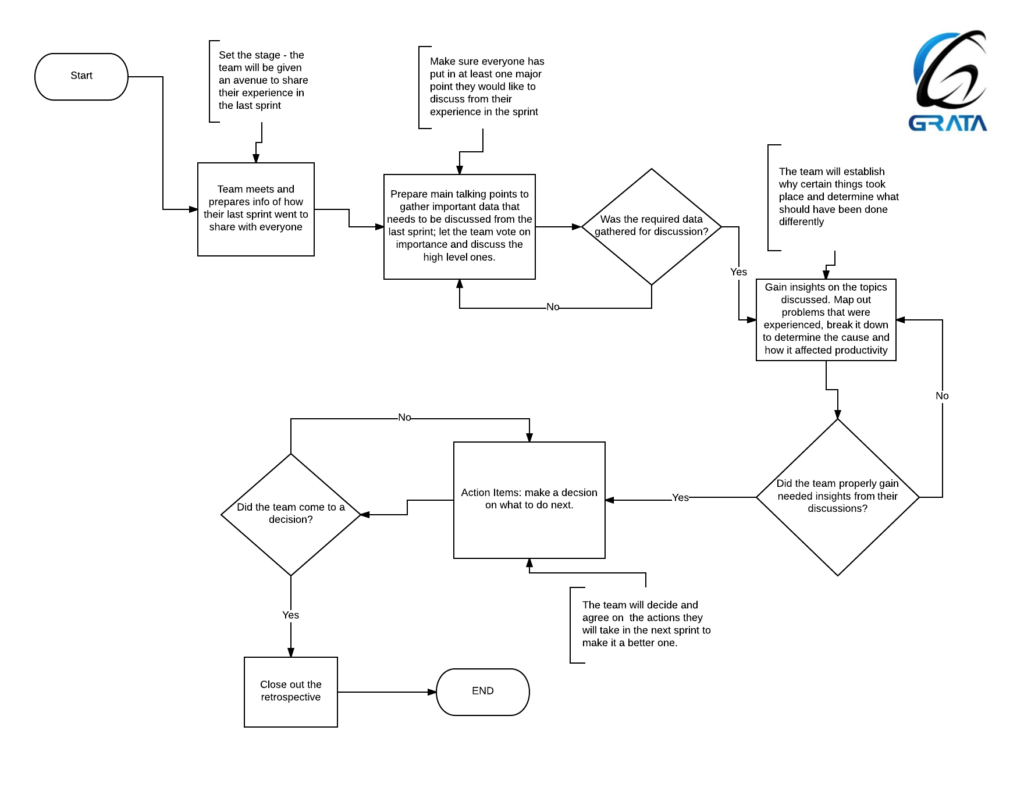Why It’s Important to Implement Retrospectives
Making it through a sprint and meeting all of the requirements for that sprint can be enough for a team on a tight deadline to jump into the next sprint without taking the time to review what they did in the previous sprint. However, what if the team made mistakes in the last sprint? Also, what if issues in that sprint caused a rush to meet the approaching deadline? What will stop these issues from happening again?
If you and your team follow Scrum techniques, you know about sprint retrospectives. But do you implement them? We’ve seen repeatedly that, for some reason, teams tend to skip the retrospectives. As well as go through multiple iterations without properly analyzing how they did in their sprints.
Skipping a sprint retrospective can hurt a team’s productivity since they keep going through sprint after sprint without addressing critical areas of concern. This means the team will keep making the same mistakes and increase risks that could affect a project.
Structuring Retrospectives
In retrospectives, a team can take the time to reflect on what they did well, what didn’t go well, and how they can improve. Scrum masters, product owners, and the development team are usually present for these retrospectives. Retrospectives can be a good learning experience and help build team morale. They don’t have to be daunting. It all depends on how you carry them out.
However, you’ll need to structure and organize them correctly. All team members should participate, and you should be able to record their suggestions. Action items should also be taken from the retrospectives, indicating what the team will strive to improve.
When it comes to conducting a retrospective, it should follow these general guidelines:
– The facilitator will set the stage to give all team members an avenue to share.
– Focusing on accomplishments and giving kudos where they are due are good ways to start the retrospective to get all team members on a good note before addressing the issues.
– All team members should contribute to the retrospective and add at least one item they would like to discuss from their experience in the sprint.
– The team should gain insight into the topics being discussed by outlining any problems experienced and breaking them up to determine the cause and how they affected productivity.
– Once the team can discuss their experiences from the sprint and identify the areas for improvement, the next step should be to create action items on what will be done next. You need to define the action items as goals clearly. They should be specific, measurable, achievable, relevant, and time-boxed (SMART).
The flow of a retrospective is depicted in the chart below:
There are many ways to conduct a retrospective. There are a few different ways in which you can carry out retrospectives.
At the end of a retrospective, all team members should leave with clear action items in mind to implement in the next sprint to better their overall productivity. It is also essential to follow up on these action items to make sure the team is volunteering to take ownership of the action items and is adapting accordingly.
References:
Agile Project Management: Importance of the retrospective. (2017, June 26). Retrieved September 15, 2017, from https://www.agile-code.com/blog/agile-project-management-importance-of-the-retrospective/
Rose, D. (2016, February 04). Agile at Work: Getting Better with Agile Retrospectives. Retrieved September 15, 2017, from https://www.lynda.com/Business-Skills-tutorials/Agile-Work-Getting-Better-Agile-Retrospectives/175961-2.html



